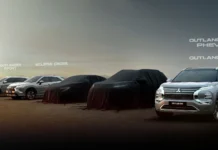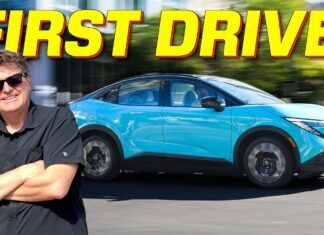Mercedes’ EQ models didn’t exactly hit the spot, so its styling has evolved to this: the Vision Iconic.
There’s obviously no question automotive design has seen its fair share of highs and lows over the past century. On the high side we have icons of the pre-war 1930s era, and that’s where Mercedes-Benz is thinking in terms of its retro-futuristic Vision Iconic concept. Instead of leaning into jellybean-shaped cars that sacrifice style at the alter of aerodynamic efficiency, this car takes a far more conventional and historic approach to what the automaker’s future design could be. And for the most part, you can’t really argue the result: This looks pretty awesome.
Mercedes cites the “golden era of automotive design” as its goal here, with flowing lines and a bit of Art Deco baked in. The exterior pulls from iconic models throughout the decades beyond the ’30s as well. The rear evoking the 300SL and the absolutely massive upright grille bringing in the W108, W111 and the 600 (W100) Pullman of the ’60s (another high point in car design). This Vision Iconic isn’t the only place we’ve seen a modernization of the grille design either, as the electric GLC’s debut last month also featured this backlit signature.
Looking at it in profile, the Vision Iconic’s proportions take on even more dramatic proportions. You get the enormously long hood with thin LED lights at both ends, rear-hinged doors and wheels rivaling that grille in size. Some cars have wheels that are comically undersized for the sort of car they’re on, but this doesn’t have that problem whatsoever.
You could reasonably argue the interior is even more outlandish than the exterior styling.
Even with all the dramatic elements you have to take in looking at the outside of the Vision Iconic, things get even better when we move inside. Gone are the stupid-looking yokes of so many modern concepts and acres of displays overtaking everything. Here, you get a far more traditional (and properly huge) four-spoke wheel with some intricate dial work happening on the instrument panel. In fact, the IP as a whole is something to take in, as Mercedes calls the floating glass look its “Zeppelin” structure.
At the center, there are a series of clocks inspired by “high-end chronographs”, one of which has the three-pointed star and acts as an AI companion. So, while Mercedes’ designers aim to blend a ton of old-world themes into the Vision Iconic’s interior, there’s still plenty of technology at play here.
Beyond all the styling elements, Mercedes-Benz also notes a steer-by-wire system and “enhanced” Level 2 point-to-point city driving capabilities as standard. Eventually, the automaker says, cars derived from the Vision Iconic will have highly automated Level 4 systems, where the driver won’t have to deal with driving at all once on freeways. From there, the car becomes a “lounge-like” atmosphere where the occupants can relax. It’s a similar story with parking, where the car will be able to use its array of sensors to park itself without needing the driver at all.
Solar cells may add huge range too, reducing the need for so much charging
Cars like the Vision Iconic are also an opportunity for Mercedes-Benz to show off what sort of tech it’s researching to improve electric car livability. For instance, the car could be covered in “innovative solar modules” where the whole body effectively becomes one large photovoltaic panel. Instead of traditional panels, these modules can be applied as a coating “similar to a wafter-thin paste”. By adding the area equivalent to a midsize SUV — 118 square feet — the automaker says the solar panel modules can add up to 7,450 miles of range per year in ideal conditions. The cells continuously generate energy as well, so they can replenish the battery when the car is turned off, provided you park it in the sun for a long enough period.
Now, will we see Mercedes’ Vision Iconic actually make it to production? That’s almost definitely a no, because the real-world dictates building something with more mass appeal than a sort of future-retro, ’30s-styled electric car. That said, people also don’t want what became the EQ lineup over the past several years, so at least the company is thinking in a different direction here. With a blend of old-school and modern touches as well as solid integration of next-gen technology, the Vision Iconic could directly inspire the brand’s next era of electrified cars. Depending on your attitude toward Mercedes right now, that could be a seriously exciting prospect.
























